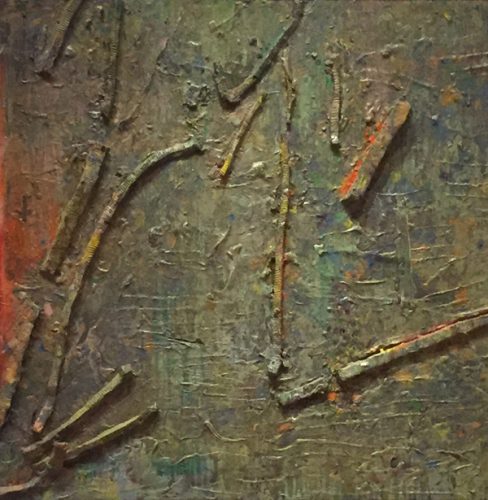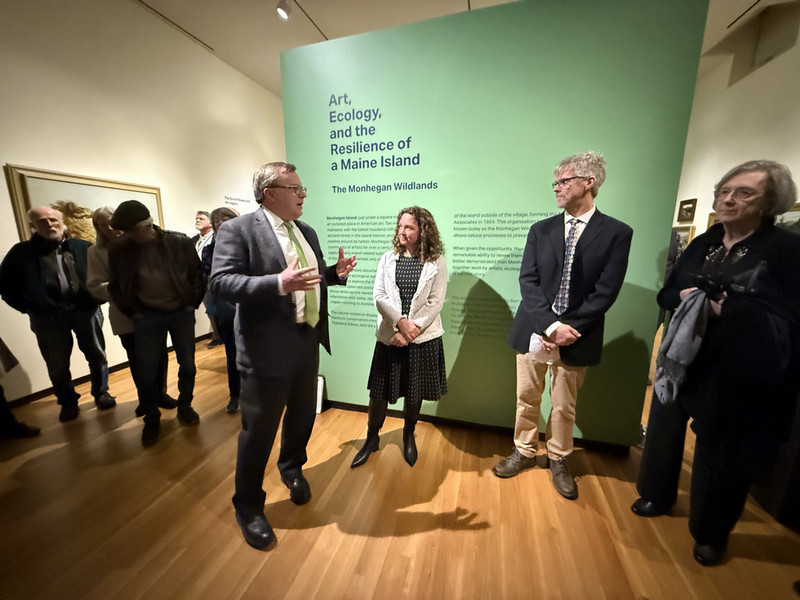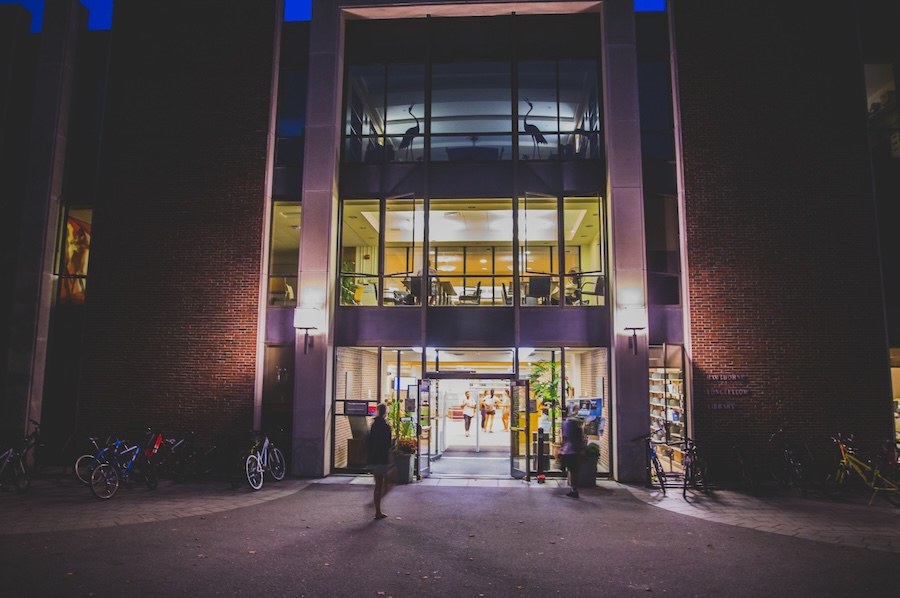Focus on “Skowhegan Green II” by Frank Bowling
By Bowdoin College Museum of Art
Frank Bowling is one of the most distinguished artists of post-war Britain. Born in 1936 in British Guyana (now Guiana), he moved to London as a teenager and graduated from the Royal College of Art in 1962. In 1966 he relocated to New York, both inspired by an earlier trip that exposed him to the work of abstract expressionist and New York School painters, and frustrated with being the only artist among his peers to be singled out for his background. His geographic departure signaled a stylistic departure away from British Pop, which was then on the rise, and a full-fledged embrace of abstraction. Working consistently in highly textured abstract paintings with a rich color palette, and often incorporating sculptural materials like foam and canvas, he explores the nonrepresentational qualities of space–from landscape to cartography–at a monumental scale. Bowling’s painting Skowhegan Green II, currently on view in Looking Anew: Art and Estrangement, 1900–2000, at the Bowdoin College Museum of Art, was inspired by the verdant landscape of rural Maine during the summer of 1984, which he spent at the Skowhegan School of Painting and Sculpture.
Bowling is on our minds for his vocal role in key debates during the Black Arts Movement. As an abstractionist and an artist of color, he bristled at tokenizing interpretations of his work that essentialized his identity as a postcolonial Black British subject. His incisive meditation on the category “Black Art” challenged many conventional notions that the black experience should be visually evident in the artist’s work – an attitude that limited one’s artistic freedom. In a 1971 essay for Art News, entitled “It’s Not Enough to Say ‘Black Is Beautiful,’” Bowling sought a more nuanced understanding of “black art” as something other than a catch-all category for the work of artists of African descent: “The traditional
This painting was donated to the Bowdoin College Museum of



